International Day of Zero Tolerance for Female Genital Mutilation
Female Genital Mutilation or female circumcision as it is called in the dark alleys and hidden groves of the interior villages where the abhorrent act is practiced has always been a hush-hush topic and because of the shame and myths or superstitious beliefs that surround it, there seems to be very little written about it.
Female Genital Mutilation has been practiced by various ancient cultures in a bid to reduce female sexuality and prevent women from being promiscuous. The effects of the process however are much worse. Since it is usually done to young girls, the psychological trauma of the pain of the process usually lasts a life time. Many young girls who have been mutilated die shortly after the process as a result of bleeding or from infection resulting from the use of non-sterilized instruments. Some contact HIV and while some others are cut so much that need to be stitched at the hospital. These ones end up experiencing difficulties during sex and child bearing in the future.
Today is the 2020 International Day of Zero Tolerance for Female Genital Mutilation - a day set aside by the United Nations to educate the general public on the ills and dangers of FGM and why all hands must be on deck for the complete eradication. As a way to lend my voice to this just cause, I believe that the best way to create awareness and make it easier for people to understand not just what FGM is, but the impact it has on the girl child and consequently the corresponding negative impact on the society as a whole is by discussing my top five books on FGM.
For centuries, literature has been the power to the powerless and the might of the unsung heroes who are not afraid to bring people's attention to overlooked societal problems. In times when people are afraid to speak up for fear of being shut down or ostracized, the pen had been held tightly and wielded swiftly to produce fiction which is sometimes hidden in symbols or allegories in a bid to drive home the point without pointing accusing fingers. We see men and women write satires, comedies and even tragedies that are not just compelling and emotional but also call people to action. Literature is indeed the mirror that makes us understand real life issues. It has been a powerful instrument in breaking of culture of silence through its didactic value.
As an Arts student, I was able to understand female genital mutilation a lot better through some novels I read. A number of authors (some of which I have listed below) have been able to shed light on this social injustice using the power of pen and they have painted vivid pictures about the dangers and effects of female genital mutilation.
Here are the books we would be discussing:
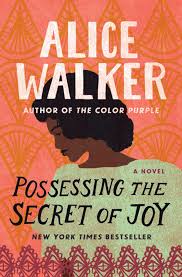
2. The Girl With Three Legs by Soraya Mire.
The courage it took to break free from the shackles of patriarchy and speak out about the evil that is being perpetrated by the Somalian society on naive girls can be felt in the autobiography of Ms. Mire. The book is a didactic tell all and regales us of her experiences - from the insecure teenager that was teased for not receiving the gift of circumcision to the woman that now understand the causes, curses and the course of FGM.
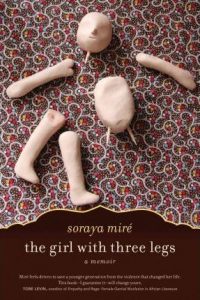
3. Female Genital cutting in industrialized countries: mutilation or cultural tradition by Mary Nyangweso
The author unbiasedly explains all the arguments surrounding Female Genital Mutilation and why it is still going on despite the public outcry. She carefully explains how tradition and emotional attachment to the cultural definition of what is right affects even intellectual decision making.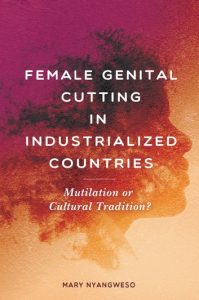
4. Cut by Hibo Wadare
To understand the gruesomeness of Female circumcision, Hibo takes us down memory lane to a six years old girl woken up in the wee hours of the day, bathed and led to a dingy tent in her own house, forced to the bed by big strong adults and then brutally mutilated. This horrific story was told by the survivor of such brutality and explains the severity of this epidemic, yet, she writes the story in a way that is surprisingly very easy to read.
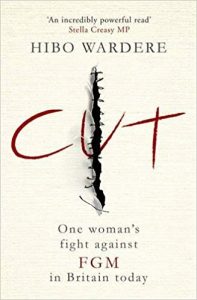
5. After Kilimanjaro by Gayle Woodson
Taking a break year to enjoy time with her fiancé while climbing up the Kilimanjaro mountain was an answer to Dr. Sarah's prayers. Nothing could have prepared for the things she witnessed as a medical doctor in Tanzania and friends with the women of the community. Using her knowledge and influence to speak out about the effect of FGM as a major cause of female mortality rate, Dr. Sarah made sure to counteract the damage archaic patriarchal traditions had done to the people of Tanzania.
Bonus:
As a French student into literature, it was of interest to me to also highlight some novels for the francophone lovers.


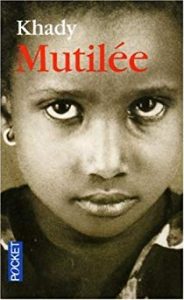
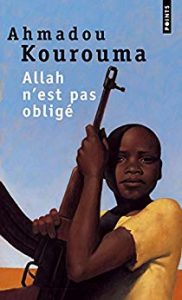
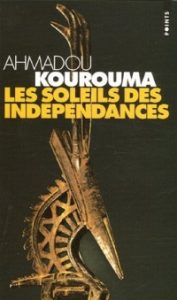
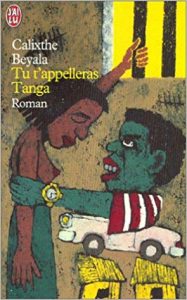
9. La voie du Salut (Aminata Maiga)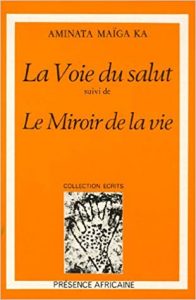
Purchase any of these books at the bookstore nearest to you or access them in online or offline libraries. Do read them and let me hear your thoughts. What do you think about the practice of Female genital mutilation? What effects keep recurring? How do you think we can win the war against this absurd heart wrenching practice?
Picture Credit : https://www.trendsmap.com/twitter/tweet/1216771948581203980
UNFPA
Female Genital Mutilation has been practiced by various ancient cultures in a bid to reduce female sexuality and prevent women from being promiscuous. The effects of the process however are much worse. Since it is usually done to young girls, the psychological trauma of the pain of the process usually lasts a life time. Many young girls who have been mutilated die shortly after the process as a result of bleeding or from infection resulting from the use of non-sterilized instruments. Some contact HIV and while some others are cut so much that need to be stitched at the hospital. These ones end up experiencing difficulties during sex and child bearing in the future.
Today is the 2020 International Day of Zero Tolerance for Female Genital Mutilation - a day set aside by the United Nations to educate the general public on the ills and dangers of FGM and why all hands must be on deck for the complete eradication. As a way to lend my voice to this just cause, I believe that the best way to create awareness and make it easier for people to understand not just what FGM is, but the impact it has on the girl child and consequently the corresponding negative impact on the society as a whole is by discussing my top five books on FGM.
For centuries, literature has been the power to the powerless and the might of the unsung heroes who are not afraid to bring people's attention to overlooked societal problems. In times when people are afraid to speak up for fear of being shut down or ostracized, the pen had been held tightly and wielded swiftly to produce fiction which is sometimes hidden in symbols or allegories in a bid to drive home the point without pointing accusing fingers. We see men and women write satires, comedies and even tragedies that are not just compelling and emotional but also call people to action. Literature is indeed the mirror that makes us understand real life issues. It has been a powerful instrument in breaking of culture of silence through its didactic value.
As an Arts student, I was able to understand female genital mutilation a lot better through some novels I read. A number of authors (some of which I have listed below) have been able to shed light on this social injustice using the power of pen and they have painted vivid pictures about the dangers and effects of female genital mutilation.
Here are the books we would be discussing:
- Possessing the secret of joy by Alice Walker

2. The Girl With Three Legs by Soraya Mire.
The courage it took to break free from the shackles of patriarchy and speak out about the evil that is being perpetrated by the Somalian society on naive girls can be felt in the autobiography of Ms. Mire. The book is a didactic tell all and regales us of her experiences - from the insecure teenager that was teased for not receiving the gift of circumcision to the woman that now understand the causes, curses and the course of FGM.

3. Female Genital cutting in industrialized countries: mutilation or cultural tradition by Mary Nyangweso
The author unbiasedly explains all the arguments surrounding Female Genital Mutilation and why it is still going on despite the public outcry. She carefully explains how tradition and emotional attachment to the cultural definition of what is right affects even intellectual decision making.

4. Cut by Hibo Wadare
To understand the gruesomeness of Female circumcision, Hibo takes us down memory lane to a six years old girl woken up in the wee hours of the day, bathed and led to a dingy tent in her own house, forced to the bed by big strong adults and then brutally mutilated. This horrific story was told by the survivor of such brutality and explains the severity of this epidemic, yet, she writes the story in a way that is surprisingly very easy to read.

5. After Kilimanjaro by Gayle Woodson
Taking a break year to enjoy time with her fiancé while climbing up the Kilimanjaro mountain was an answer to Dr. Sarah's prayers. Nothing could have prepared for the things she witnessed as a medical doctor in Tanzania and friends with the women of the community. Using her knowledge and influence to speak out about the effect of FGM as a major cause of female mortality rate, Dr. Sarah made sure to counteract the damage archaic patriarchal traditions had done to the people of Tanzania.

Bonus:
- Warrior Marks by Alice walker and Pratibha Parma
- The Female Circumcision controversy by Ellen Greenbaum
- Nine parts of desire by Geraldine brooks
- The color of purple (1-3) by Alice Walker
- Law's cut on the bodies of human right by Juliet rogers
- The hidden face of eve by nawal El saadawi
- Monique and the mango rains by Kris Holloway
- Desert dawn by war's Dirie
- The caged virgin by Ayaan hirsi ali
- Female Genital mutilation the complete statistics by unicef
- Bodies and Voices by mereta falk borch and marteen leer
As a French student into literature, it was of interest to me to also highlight some novels for the francophone lovers.
- Rebelle ( Rebel)

- Bistouri des larmes (Scalpel of tears)
- Le Couteau Brulante (the searing/blazing knife)

- Awa la petite Mendiante (Awa the little beggar)
- Mutilee (Mutilated)

- Allah n’est pas obligée

- Les soleils des independances (The suns of independence)

- Tu t’appelleras Tanga (You shall be called Tanga)

9. La voie du Salut (Aminata Maiga)

Purchase any of these books at the bookstore nearest to you or access them in online or offline libraries. Do read them and let me hear your thoughts. What do you think about the practice of Female genital mutilation? What effects keep recurring? How do you think we can win the war against this absurd heart wrenching practice?
Picture Credit : https://www.trendsmap.com/twitter/tweet/1216771948581203980
UNFPA




Comments
Post a Comment